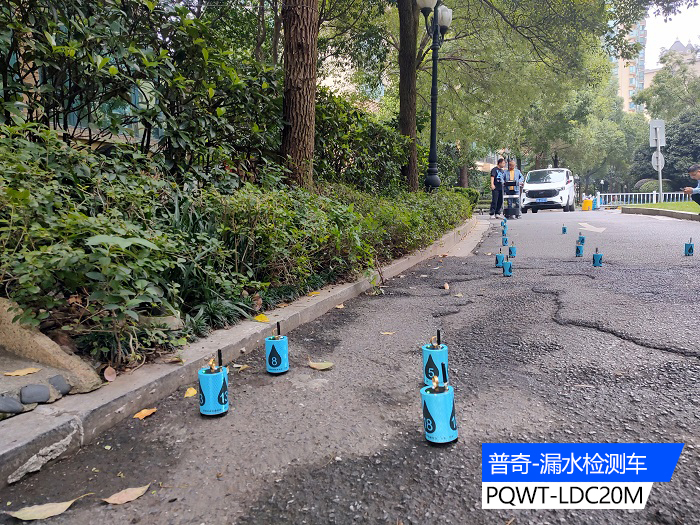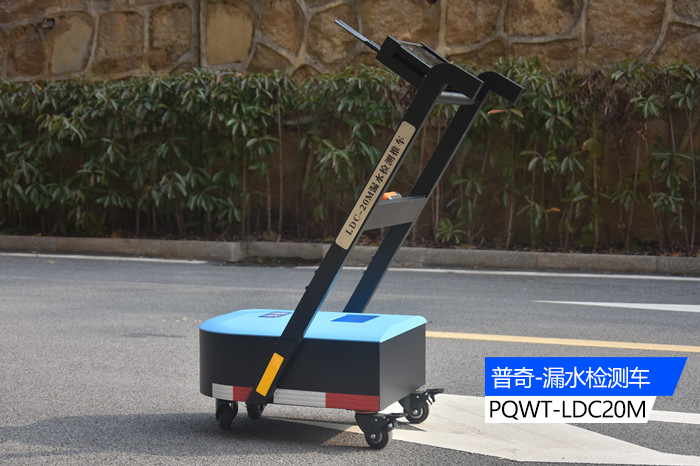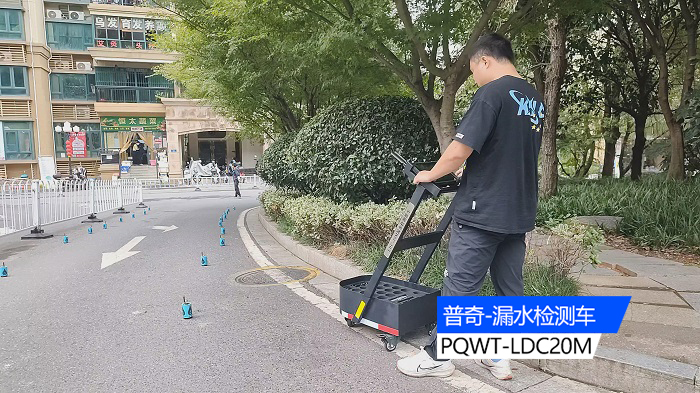Underground Pipe Leak Detector is an extremely important task in the management and maintenance of urban water supply networks. However, in practice, leak detection often faces many challenges. In this paper, we will analyze the difficulties of Underground Pipe Leak Detector and discuss the corresponding solutions.

First, multiple pipes in parallel, multiple sets of data difficult to distinguish
In the urban water supply network, multiple pipelines in parallel is very common. When using Underground Pipe Leak Detector for leak detection, often receive multiple pipe signals, which makes it difficult for technicians to distinguish the real leak. To address this problem, the following measures can be taken:
1. Adopt joint detection with multiple probes: by conducting detection in multiple places, the leakage of multiple pipelines can be detected at the same time. During data processing, comprehensive analysis can be carried out according to the probe location and the intensity and frequency of the leakage sound and other information in order to distinguish the specific leakage point.
2. Using advanced data analysis tools: Specialized software or algorithms are used to process and analyze the collected data. For example, Puchi's Leak Detection Vehicle can help technicians better identify and differentiate between different leak signals. By visualizing the data, the location and characteristics of the leaks can be observed more intuitively.
Second, the complexity of the pipe network, difficult to locate
In some old or complex water supply network areas, the pipe network situation may be very complex. This makes the troubleshooting work exceptionally difficult and increases the difficulty of localization. In this case, the following measures can be taken:
1. Detailed understanding of the layout and structure of the pipe network: before carrying out leak detection, technicians need to have a detailed understanding of the layout and structure of the water supply pipe network. This can be achieved by consulting relevant drawings, information or on-site investigation. Understanding the layout and structure of the network helps to better locate the leak.
2. Reference to other monitoring data: If possible, you can refer to the data of other monitoring equipment, such as pressure sensors, flow meters, etc., to assist in determining the location of the leak. These data can provide additional information about the operating status of the pipeline, which can help locate the leak more accurately.

Third, high technical requirements, experience-dependent
For some technically demanding leak location tasks, technicians are often required to have a wealth of experience and expertise. This makes the leak detection work more dependent on personnel and increases the difficulty of localization. To address this problem, the following measures can be taken:
1. Training and technical exchanges: Regular training and technical exchange activities are organized to help technicians improve their skills. This includes training in leakage sound identification, sensor use techniques, data processing and analysis methods. Through training and technical exchanges, the professional ability of technicians can be enhanced.
2. Utilize automation and intelligent technologies: Actively promote automation and intelligent technologies, such as intelligent sensors and automated detection systems. These technologies can reduce the dependence on personnel and improve the accuracy and efficiency of positioning. At the same time, automation and intelligent technology can also provide real-time monitoring and early warning functions to improve the operational efficiency and management level of the water supply pipe network.
Fourth, noise interference, the location of the leak is difficult to determine
In some cases, leakage of neighboring pipelines will produce noise interference on other pipelines. This interference makes it more difficult to accurately determine the location of the leak. In order to deal with noise interference, the following measures can be taken:
1. Use filtering and noise reduction techniques: add filters to the data acquisition process to remove noise interference and improve signal quality. This helps to identify and determine the location of leaks more accurately. At the same time, the frequency and waveform characteristics of different leakage sounds can be used to differentiate in order to accurately determine the location of the leakage point.
2. Collecting and comparing data multiple times: For situations where noise interference may exist, data can be collected and compared multiple times. By analyzing the differences between different data sets, the location of the leak can be judged more accurately. At the same time, some statistical methods or pattern recognition techniques can also be taken to reduce the impact of noise interference on leak detection.

3. Comprehensive use of a variety of detection methods: In addition to the use of Underground Pipe Leak Detector, you can also use other detection methods, such as pressure testing, flow measurement, etc.. Through a variety of methods to confirm and supplement each other, you can improve the accuracy of judging the location of the leak. This approach also reduces the dependence on a single method and reduces the risk of inaccurate positioning due to noise interference.
In summary, although Underground Pipe Leak Detector leak detection faces many difficulties, these problems can be effectively solved by using multi-probe joint detection, high-precision localization techniques, filtering and noise reduction techniques, and accumulating experience and technical knowledge. In practice, it is necessary to choose the appropriate method according to the specific situation to ensure the accuracy and efficiency of the leak detection work.








